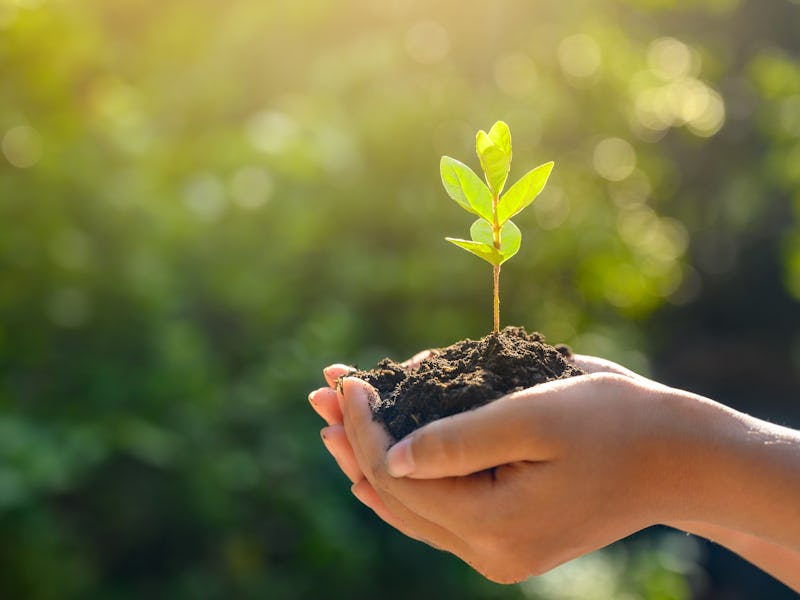This Experimental Soil Transplant Could Help Trees Become Climate Resilient
Climate-resilient trees make for a happy planet.

You may not realize it, but Earth has a microbiome that keeps it happy and healthy, just like the bacteria crawling around in your gut keep your immune system copacetic.
On Thursday, scientists published a paper in the journal Science that further supports the idea of soil microbes as secret superheroes. Scientists still aren’t sure why it happens, but it appears these microbes could significantly impact trees’ ability to adapt to climate change.
“One speculative idea is that microbes can influence the timing of events in a plant's life,” Richard Lankau, study co-author and an associate professor in the department of plant pathology tells Inverse.
Soil Transplants Can Make Trees Resilient
Lankau’s team took soil microbes from 12 ecologically stressed environments — i.e., environments that were colder, warmer, or drier — in the northern U.S. Then, the scientists “inoculated” young tree saplings with these new microbial buddies in controlled greenhouse settings and out in the wild. As it turns out, trees exposed to these soil microbes had higher survival rates when they encountered drought, heat, or cold stress.
There’s a reason to suspect it’s specifically microbial fungi that did the trick. Fungi can form mutually beneficial — also known as mycorrhizal or symbiotic — relationships with trees.
Lo and behold: Trees only developed drought hardiness when they could form a symbiotic relationship with fungi. On a related note, the greater the diversity of microbes, the more resilient the tree — not unlike our gut.
The Pivot to Tree Planting
But that doesn’t mean we can just start transplanting soil willy-nilly in forests. There are two big caveats. First: such soil transplants likely wouldn’t impact mature trees. Second: it would be very hard to scale up these transplants.
Yet Lankau believes his research could yield benefits for a related project that is definitely scalable: tree planting. Tree seedlings used in reforestation projects typically get cultivated in indoor nurseries, where they pick up all sorts of fun microbes. Lankau and co-author Cassandra Allsup are currently working with nurseries in the Midwest to determine whether these seedlings can be used strategically to achieve greater success when planting during stressful times such as a drought.
“We think this may be a more scalable approach than actual soil transplants into intact forests, since it does not require much different than our current practices,” Lankau says.
This article was originally published on